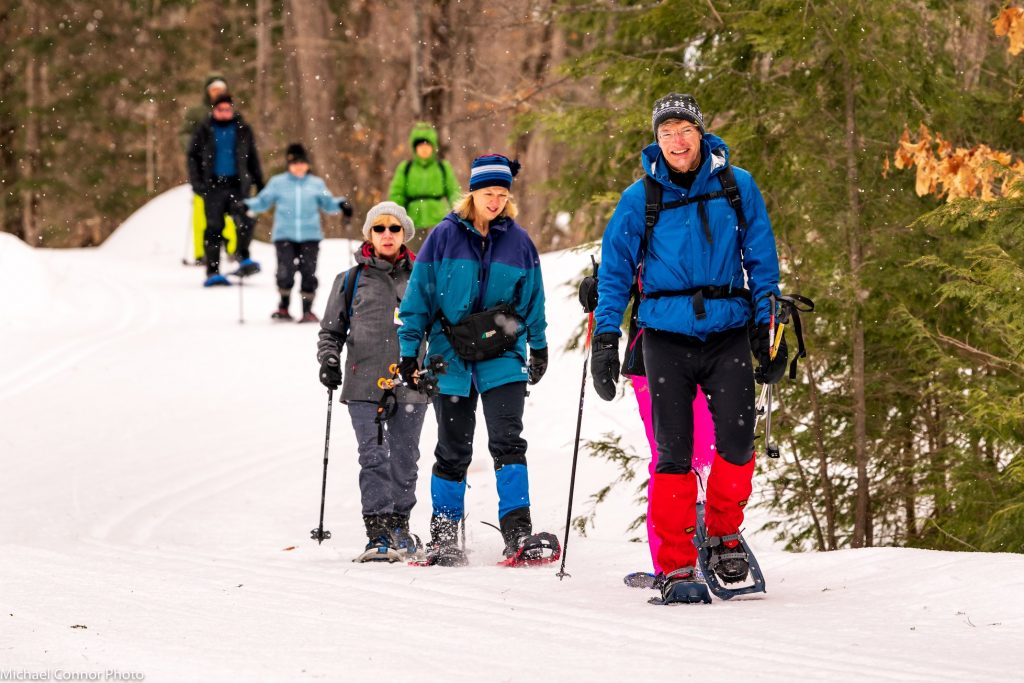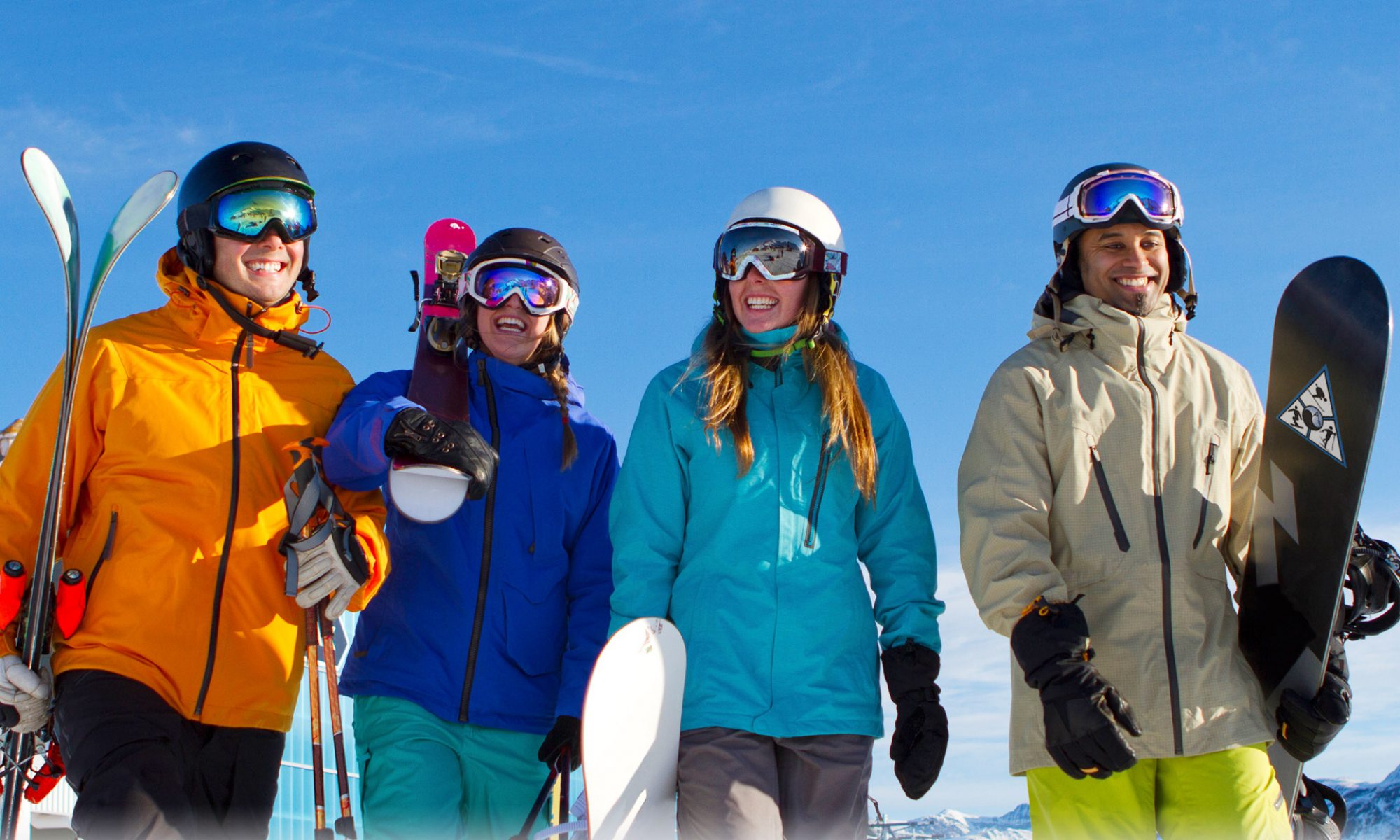
At HPSC, we also snowshoe. Snowshoeing is less complicated than skiing in terms of gear. Basically, you need snowshoes and a good pair of winter boots. While the basic idea of snowshoeing has remained the same (create more surface area to spread out your weight so you don’t sink in the snow), snowshoe technology is much different now than in the days of the wooden shoes. They are now made of lighter materials, such as aluminum (and we’re sure carbon fibre ones probably exist!) or plastic (durable and inexpensive, but will not have as much flex), they have various binding systems, and features like crampons to help you up icy slopes.
Like skis, the snowshoes you want will depend on the type of snowshoeing you plan to do. Are you going to be on well-packed terrain? Deep snow? Flat terrain? Hilly? Are you going to be doing something crazy like running in them? Snowshoes will have different features appropriate to different terrain.
To size them, you need to figure out the weight the snowshoes will be supporting (i.e. you + all your gear). For HPSC daytrips, the weight won’t be much more than your body weight, but if you are headed out on a backcountry trip fully loaded with camping gear, you are going to be much heavier. Snow conditions also play a role; for well packed snow, you can get by with a smaller surface area. But don’t get too caught up in this; any snowshoes will work, they just might not be the most effective for the conditions of the day. Get something that will work for the majority of snowshoeing you will do.
When you are ready to buy, bring the winter boots you plan on wearing and try on shoes. Different binding systems will feel more or less comfortable.
There are also accessories to consider such as heel lifts if you are going to be doing a lot of climbing, or tail extensions to give you more surface area if you need it. Many also snowshoe with poles, especially if you are in hilly terrain. Gaiters are also useful to prevent deep snow from getting inside your boots (speaking from experience…wet socks aren’t fun!).

For more information on snowshoes, check out this handy guide from MEC: https://www.mec.ca/en/explore/how-to-choose-snowshoes
Stay tuned for articles in November on waxing and clothing.

